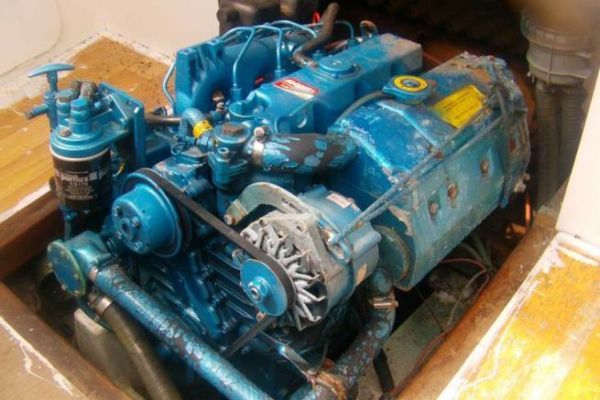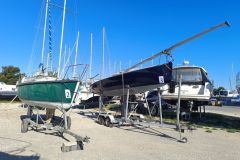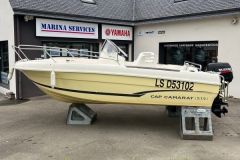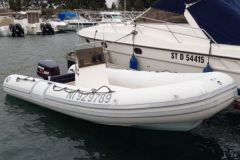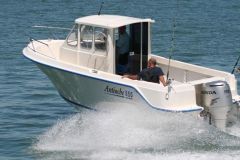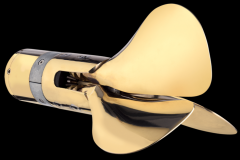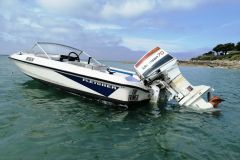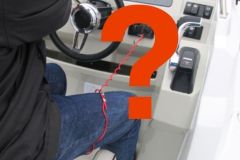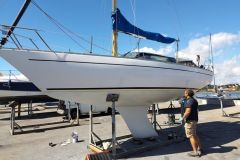The engine is an essential element in the purchase of a used boat. Having to replace it can be expensive, and being able to rely on it is a major safety criterion. That's why it's a good idea to carry out a number of basic checks before you buy.
Lubrication system maintenance
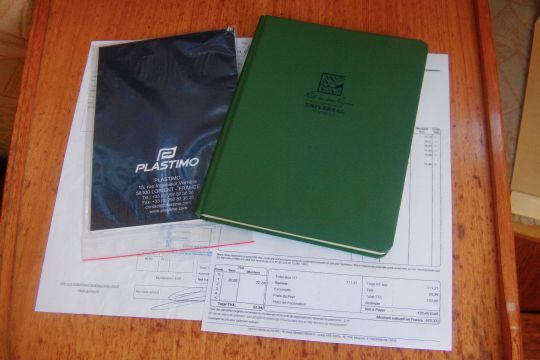
Maintenance of the lubrication system involves draining the engine and replacing the oil filter, at least once a year. An engine that has been poorly maintained is likely to lack power and to have worn out prematurely, which will not guarantee a long service life.
Only the maintenance logbook and invoices can reassure you on this point. A good follow-up of the engine's maintenance every year or at the number of hours reached will confirm that it has been rigorously maintained.
Belts
Belts can break if they are in poor condition. Check that they are not starting to tear and that they are sufficiently taut:
- Too high a tension can force the bearings of the various components they drive, causing them to fail too quickly.
- Too little tension can cause them to slip and wear prematurely.
Cooling circuit: impeller and exhaust
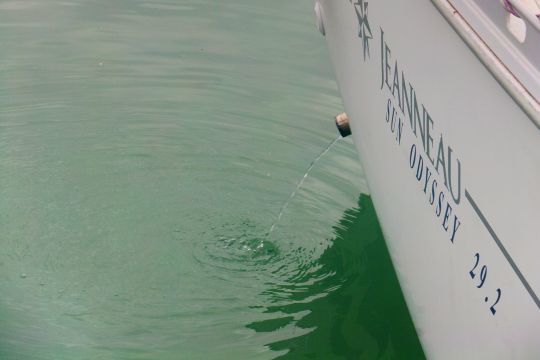
An engine that has overheated will show the same signs of weakness as if the oil change intervals have not been respected, and is therefore not a good deal. A visual check of the exhaust will confirm whether it's working properly. If water is coming out of the exhaust, the engine has cooled down. If not, beware: the engine may already have overheated if the owner was careless.
What's more, the exhaust can provide important information about the engine's health. In fact, if there is smoke coming out of it, we can draw the following conclusions:
- White smoke is a sign of water in the combustion process, due either to water in the fuel tank or a leak in the cylinder head gasket. You'll need to solve this problem before damaging the injection system.
- Black smoke indicates incorrect injection settings, often due to excess fuel. You'll need to overhaul the system before further engine damage occurs.
- Blue smoke means oil in the engine's combustion system. This is the most problematic case, as the oil level will quickly drop, and you'll need to keep a close eye on it before you run out and break the engine. In this case, you'll need to repair the problem as soon as possible, and it's a sign that the engine is already very tired.
Motor anodes

Often little-known, this sacrificial anode plays an essential role in engine longevity. Its purpose is to keep the internal pipes of the engine's water circuit healthy. These pipes are invisible from the outside. If you ask the salesman about the replacement intervals, he'll tell you: "What's a motor anode? I didn't know they had to be serviced every year? Then you can't count on an engine in good condition. The cooling circuit will need to be overhauled.
Motor control and cables
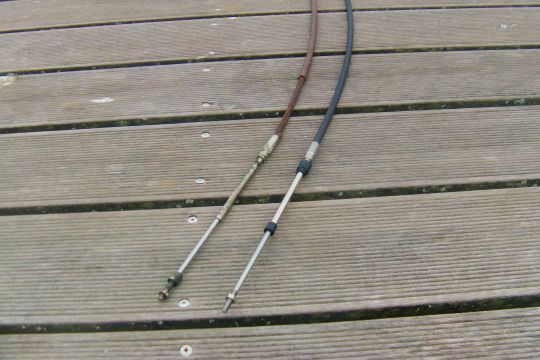
To check that the joystick is working properly before setting off, it's important to operate it in all possible positions, and to make sure there are no hard points.
A visual inspection of the cables from the control mechanism to the actuators will confirm that the motor controls are working properly. A stripped cable sheath with traces of rust is a sign of failure. A rusty joystick mechanism, with no trace of lubrication, will also be a sign of lack of maintenance and will be unreliable. The engine controls are an important point to check, as they are what will guarantee you good maneuverability in port. A failure of these before a catway, dock or side-by-side mooring can have serious consequences for a boat, and cause serious damage.
Batteries and fuses
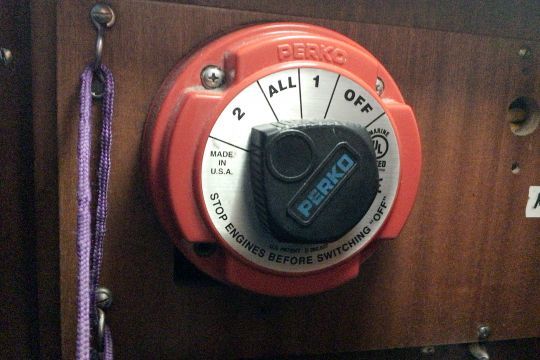
The batteries must not show any weaknesses at start-up. What's more, good electricity management is a considerable asset if you never want to run out of power. This can be achieved with a circuit breaker. This will enable you to recharge the batteries you need, depending on the power source you choose: engine, solar panels, wind turbine, etc. A good knowledge of the electrical circuit will be a good selling point for the owner, and proof of credibility.
These checkpoints will enable you to estimate the condition of the engine and identify any work that needs to be carried out. A test run is the best way to get a feel for the machine's behavior. It allows you to test its power, its ease of starting and to detect any malfunctions or leaks. A well-maintained engine that starts at any speed is a sign of reliability.
